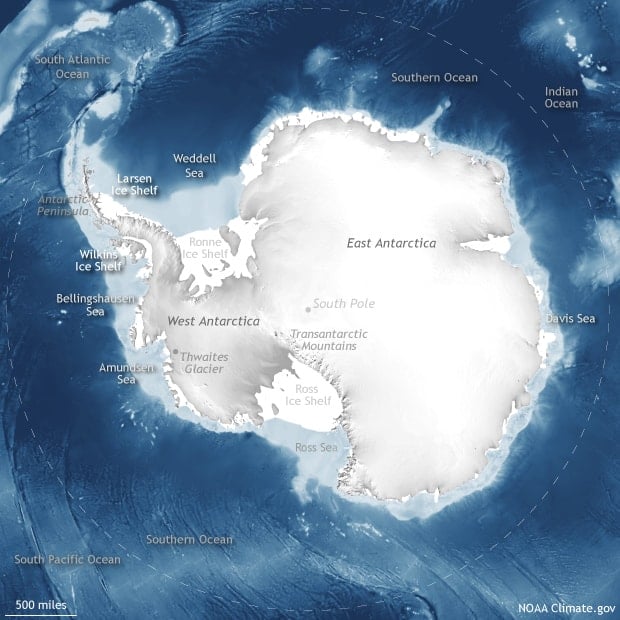247 years ago, English explorer James Cook sailed south past all known land and crossed the Antarctic Circle in the hopes of finding a new continent rich with resources. He found his path forward blocked by ice, forcing his to return empty handed.
Cook concluded that if there was land beyond the ice it was, “condemned to everlasting rigidity by nature, never to yield to the warmth of the sun, for whose wild and desolate aspect I find no words.”
Since then, the continent of Antarctica has been subject to numerous attempts at exploration, both through physical visits and from remotely sensed data extracted from satellites. All of this exploration has yielded some pretty interesting geographical facts about the continent of Antartica.
Where is Antarctica Located?
Antarctica extends from 60°S to the South Pole. About the size of the United States and Mexico combined, Antarctica is typically divided into three regions: East Antarctica, West Antarctica, and the Antarctic Peninsula.
Antarctica is completely surrounded by the Southern Ocean.

Highest Continent on Earth
The white expanse of Antartica can lead to the false sense that the continent is mostly flat. With an average elevation of 2,500 meters (8,200 feet), Antartica is the highest continent in the world.

Antarctica is a Desert
Deserts aren’t only in hot and dry places. Deserts occur anywhere that receives little precipitation. Much of Antarctica is a polar desert. Averaged over the entire continent, Antarctica receives only 166 millimeters (6.5 inches) per year.
The most precipitation falls in the Peninsula (15 to 25 inches a year) and the lowest in the high interior (as little as 50 millimeters (2.0 inches). Almost all precipitation falls as snow in Antarctica.
Coldest Continent on Earth
While both the Arctic and Antarctica are founded the same distance away from the equator, Antarctica is far colder.
At the South Pole, the average monthly summer temperature is −18°F, and the average winter monthly temperature is −76°F in Antarctica. That makes the North Pole almost seem balmy by comparison with an average summer temperature of 32°F and winter average temperature of −40°F.
The coldest temperature ever recorded on Earth occurred was measured at -144°F (98° C) in several spots on the East Antarctic Plateau which encompasses the South Pole.
Largest Single Mass of Ice on Earth
About 98% of Antarctica is covered in snow and ice. The covering of ice is called the Antarctic ice sheet and it’s the single largest mass of ice on Earth.
The Antarctic Ice Sheet is transected by the Trans-antarctic Mountains into two unequal sections called the East Antarctic ice sheet (EAIS) and the smaller West Antarctic Ice Sheet (WAIS).
The Antarctica Ice Sheet covers an area of 14 million square kilometers (5.4 million square miles) and contains 26.5 million cubic kilometers (6,400,000 cubic miles) of ice. Roughly 60% of the Earth’s fresh water is contained in this ice sheet and 90% of the world’s ice.
A Continent Without Forests
Antarctica is the only continent without trees or shrubs. The extreme conditions of Antarctica mean that only a small amount of two types of vascular plants, mosses and lichen, as well as liverworts, can grow on the continent.
Only two active volcanoes in Antarctica
Deception Island is one of the only places in the world where ships can sail directly into the middle of an active volcano. Deception Island and Mount Erebus are the only two active volcanoes in Antarctica.

References
Antarctica is colder than the Arctic, but it’s still losing ice. (2019, March 12). Retrieved from https://www.climate.gov/news-features/features/antarctica-colder-arctic-it’s-still-losing-ice
Morgan, D. (2020, January 24). 200 years of exploring Antarctica ? the world’s coldest, most forbidding and most peaceful continent. Retrieved from https://theconversation.com/200-years-of-exploring-antarctica-the-worlds-coldest-most-forbidding-and-most-peaceful-continent-129607
